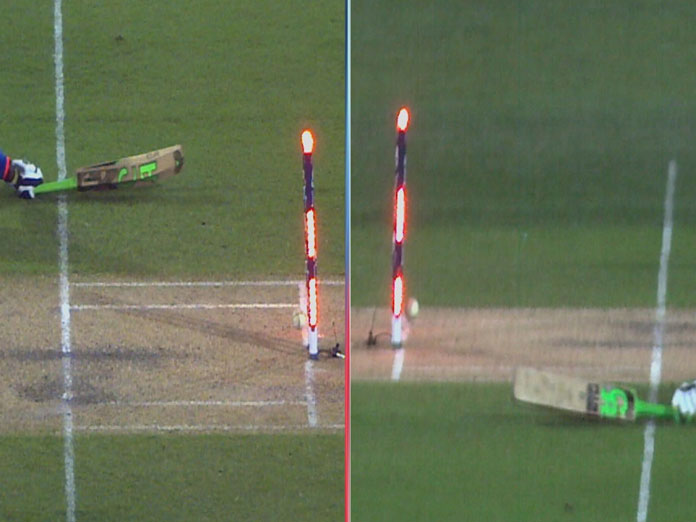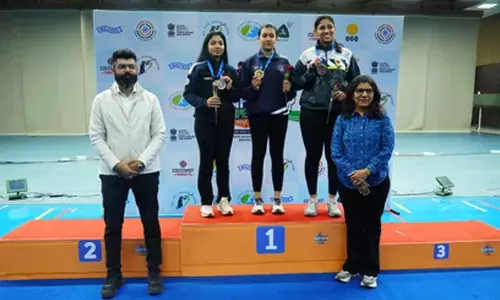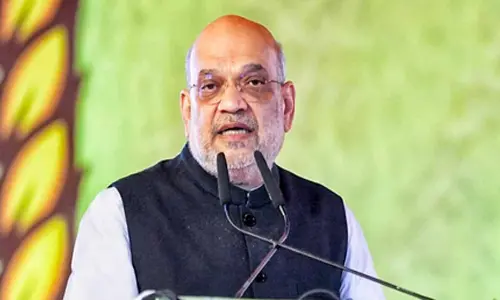Technology in Cricket: To be or not to be, is the question

The introduction of technology into cricket has not been a smooth one The phrase to err is human was precisely why cricketers and cricket administrators around the world felt that with modern technology, the chances of a human error will be adequately solved Furthermore, the introduction of stump mics, spider cams, DRS, snickometers will bring about transparency and excitement to the televisio
The introduction of technology into cricket has not been a smooth one. The phrase “to err is human” was precisely why cricketers and cricket administrators around the world felt that with modern technology, the chances of a human error will be adequately solved. Furthermore, the introduction of stump mics, spider cams, DRS, snickometers will bring about transparency and excitement to the television viewers, who are growing in millions.
The multi-media relay of ’live’ cricket brought the game so much closer and made it interesting to watch. This led to a commercial bonanza for the business of cricket. And in bringing entertainment to attract more eye balls, technology development is progressing more towards non-cricket activities rather than to focus on the actual game of cricket.
The stump mic, which remained mute for the viewing public earlier, has now become the new play toy of the game. Listening to the banter, remarks and sledging between cricketers during the game has made the life of a viewer exciting but rather stifling for a cricketer. After all, hearsay and gossip has always found its presence in the first page of a tabloid.
A chatter and a few caustic remarks have always been a part of the game of cricket for well over a century. Sledging, as one popularly calls it, has been prominent in cricket from school cricket to the very top level of the game.Although a lot has been said about sledging recently, at most times, amongst the cricketers, it has been more in fun than with any personal malice. The most hilarious and funny repartees were normally directed at one's own players, especially when they misfielded, dropped a catch or got out in a ridiculous manner.
Cricket is a slow and time consuming game and to have 13 mute cricketers would definitely make it into a boring affair. A day in the field does need some wordy amusement to all out there in the middle. The famous words of William Shakespeare comes to one's mind: “To be or not to be, that is the question."
The stump mic technology may provide entertainment but it needs to be monitored correctly. A sportsman, when he plays for his country, has put in many many hours of hard work and his mind is focused on doing well not only for himself but also for his country and team. Every person reacts differently in adverse conditions and so it is while playing cricket. One cannot expect each person to have a cool and collected temperament.
Meaningless words are spoken and the hurtful personal remarks should be dealt with behind the scene, rather than making it into a public affair. The Rishabh Pant and Paine incident turned out to be a laughable one and to me, so was the Root and Gabriel one. None of the players at the end found it objectionable and so penalising a cricketer may follow the laws of punishment, but if the players concerned did not find it a problem, a handshake or a hug would have been a good way to bring the episode to a closure.
Technology in cricket is leading to confusion at times. In most other sports, a line call is what it is being used for. In cricket, there are many other factors that play a part. The uncertain factors are compensated by the 'call of the umpire' and so this brings in inconsistency. The idea of half the ball hitting the stump or landing in line with the wicket makes the process quite ridiculous.
How can a similar incident or occurrence have two different decisions, of being out or not-out depending on an umpires call? There has to be consistency or else the very technology that we so proudly talk about is incorrect. The ball hitting the stump, whether full, half or quarter should make no difference. One either accepts technology in full or not, as a half way measure is bringing-in confusion that the game can very well do without.
The other area of concern that one expected technology to eradicate was in the review of catches. I can recollect years ago when the late Tony Grieg held a ball in his hands, well rested on his palms and with the back of his hands touching the ground. An example of a clean legitimate catch, which when reviewed by a camera looked as if the ball was touching the ground. He did this demonstration to show how one could misjudge a genuine catch. He was not entirely convinced about the correctness of the technology which was introduced. This element of doubt seems to still persist.
Unfortunately, umpires have now started depending a lot on technology as a decision solver. The recent errors that one saw umpires make in the knock-out stages of the domestic Ranji Trophy made one wish for technology. Unfortunately, therefore, “to be or not to be” for technology in cricket, has progressed to “it has to be”. Cricket, as a sport has stood for fair-play.
The idea of victory at all costs is what disrupted Australian cricket recently and could ruin the game of cricket in the future as well. Technology has a major part to play in bringing about transparency and correctness. The ICC has to show more zest in implementing technology and in enhancing its development. The stump mic should not become a tool for entertainment.During my Test match debut, I did receive a fair amount of sledging by some of the English players.
There was no one to complain to and my only other option was to sledge back. I had a wonderful time doing it at forward short-leg, but a drink thereafter or a game of golf with my opponent was all it took to be friends and laugh about it later.Cricketers are the actors out in the middle, one should take their theatricals with a pinch of salt. We happen to be a very friendly community off the field.
-Yajurvindra Singh














